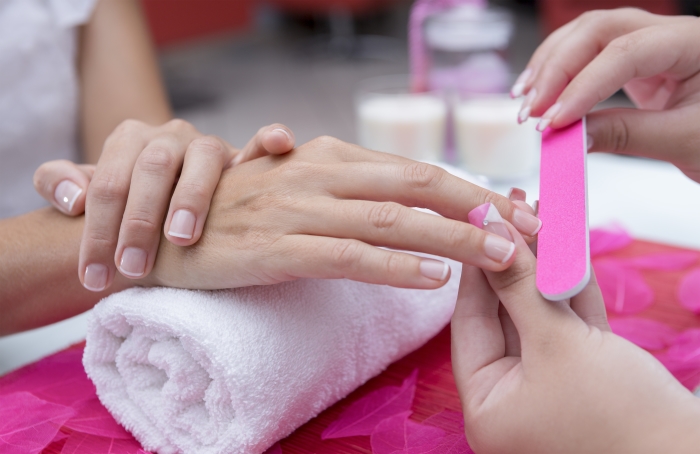We are now entering the time of year when days get a little shorter, nights get a little colder, the snow begins to fall—and your skin starts flaking like coconut shavings. And if it becomes super dry, then you will be subjected to huge cracks (largely in your hands and feet) which are not only unsightly, but oftentimes extremely painful. What are you to do? Fortunately, there are quite a few skin-healing options.
Create a Moisturizing Ritual
Because winter weather is so much more drying to your skin when compared to the other months of the year, you’re going to want to establish a moisturizing ritual. If you already have one in place, you’ll probably need to modify it due to the harsher conditions.
One of the first things you can do is purchase a moisturizer that is oil-based as it is more protective for the outer layer of your skin than a product that is water-based. Most nighttime creams fit the bill, so you may be best choosing one of them.
The one consideration you may have when selecting the moisturizer for you is how sensitive your skin is and how easily your pores clog. To prevent any breakouts or blemishes, in their article titled 10 Winter Skin Care Tips, WebMD suggests that you stick with a product made from one of these oils: avocado, mineral, primrose, or almond.
Protect Your Skin from the Sun
Normally, protecting your skin from the damaging rays of the sun is something that you think about only in the heat of the summer. However, the sun’s rays can dry your skin as much in the wintertime, making it critical to apply sunscreen whenever you’re going to be spending a great deal of time outside (think walking, shoveling snow, and other winter activities).
Even if you tend to keep indoors because you’re not a fan of the colder temperatures, this suggestion is also something to keep in mind for your children or grandchildren who do spend a lot of time outside sledding, skating, or making snowmen. Their skin can dry out easily too, so protection is the first step to keeping their skin in good condition.
Limit Your Skin’s Exposure to Hot Water
When the wind is blowing and the snow is falling, it is easy to feel as if you are chilled to the bone. This makes taking a long, hot bath or jumping in the hot tub for an extended period of time extremely tempting, but you’re better off limiting your skin’s exposure to hot water sources.
Sitting in a tub of hot water, and even standing in a hot shower, causes your skin’s moisture levels to plummet. In addition, if you are known to spend a large amount of time in a hot tub, you’re likely sweating a lot which lowers your sodium levels and makes you lose even more water yet.
To keep your skin moisturized yet warm your body at the same time, aim for showers that are warm, but not hot. You can still enjoy your time in the hot tub as well, just start cutting back if you notice that your skin is drying as a result.
Does Drinking More Water Help Increase Skin Moisture?
You’ve likely heard that true hydration starts on the inside, meaning that you need to drink more water if you want soft, supple skin. However, according to an article published in Nutrition Reviews, a journal that ranks 5th among other nutrition and diet-based journals, this is nothing more than a myth.
The authors attribute skin dryness largely to dryer air, exposure to hot water, using skin care products that remove your natural oils, as well as various medical conditions and medications that ultimately take the moisture out of your skin. So, while drinking water is good for your health, it isn’t necessarily enough to resolve your dry skin issues.
You May Need to See a Dermatologist
If you just can’t seem to get a handle on your dry skin or the problem isn’t clearing up with an over-the-counter remedy, then a visit to an expert may be in order. Contact a dermatologist in your area and make an appointment to see what he or she can do for you.
To find a one close to your home, you can always go to the American Academy of Dermatology’s (AAD) website and locate one from there. Simply access their For the public page, scroll down to the “Find a Dermatologist” section, enter your zip code, choose your radius (your options range from 5 miles to 150 miles), and hit the search button.
You can also add the AAD to your News Feed by liking their Facebook page. This will put their skin protecting and saving tips right in with the status updates created by your family and friends, allowing you to get the best skin-enhancing information right when it is released, helping you to care for your outer covering no matter what the season.
It may be more difficult to have moisturized skin in the cold winter months, but is certainly isn’t impossible. Just follow these recommendations and watch your skin glow!




